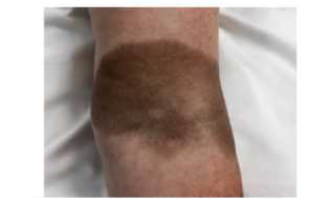What is iron?
Iron
is needed by blood cells to transport oxygen around the body and give us
energy. Iron is important for muscle strength and brain function. Blood tests
can be used to check iron levels. When iron levels are low, your child may feel
tired and not able to do their usual activities. Some children with low iron
can develop anaemia.
Why does my child need an
iron infusion?
Low iron levels are usually treated effectively
with iron tablets or liquid. Some patients need to have iron given through a
vein (intravenous or IV) as an infusion.
Some reasons for needing an iron
infusion include:
- Low
iron levels that have not improved with iron tablets or liquid
- Patients
that cannot take iron tablets or liquid because of side effects (e.g.
constipation) or problems with absorption (e.g. Crohn’s disease)
- Kidney
or heart problems
- When
a blood transfusion is not suitable (e.g. for religious reasons)
- Very
low haemoglobin levels due to low iron (iron deficiency anaemia) that need to
be increased quickly (e.g. prior to surgery)
Iron infusions may cause side
effects, including rare but serious allergic reactions – see possible side
effects below for more information.
What to tell your child’s Doctor before
an iron infusion:
- If your child has
had a reaction to any type of iron injection or infusion before
- If your child has
had an iron infusion before
- If your child is
unwell at the moment
- If they have other
allergies, asthma or eczema
- If they have ever
had liver problems or high iron levels
- Note: IV iron
should be avoided in the first trimester of pregnancy
Questions to ask your
child’s doctor before the iron infusion:
- Why does my child
need IV iron?
- What are some of
the side effects? (see below)
- How long will it
take for the iron infusion to work?
- Does my child need
another blood test?
- If your child is
taking iron tablets or liquid, these are normally stopped for at least one week
after the iron infusion is given – check with your doctor when to start taking
iron tablets or liquid again
Possible side effects
Speak to your child’s doctor if you are worried about any of the
following possible side effects.
Common side effects (1-10% of patients):
- Headache
- Dizziness
- Flushing (redness of the skin, especially
the cheeks or neck)
- Nausea
- Muscle or joint pain
- Changes in taste (e.g. metallic taste)
- Blood pressure changes (low or high blood
pressure)
- Low phosphate levels
Rare side effects (less than 1% of
patients)
- Serious
allergic reactions such as anaphylaxis can occur and may be
life-threatening
- Your
child will be closely monitored during the infusion and for 30 minutes
afterwards
Alert nursing staff immediately if you/your child:
- Shows
any signs of an allergic reaction (e.g. swelling of the lips, mouth or throat,
or difficulty breathing [short of breath, puffing when speaking])
Very rare side effects:
- Permanent
brown staining of the skin can occur around the injection site
Alert nursing staff immediately if you/your child:
Has any pain or swelling around
their IV line or you notice any change in the colour of the skin near the IV
line.
There
may be other side effects that are not listed in this fact sheet. If you notice
anything unusual or are worried about your child, speak to your doctor.

What happens on the day of the iron infusion?
- Iron
infusions are usually given in the Day Medical Unit at the Royal Children’s
Hospital, sometimes patients will have the infusion on a different ward if they
are in hospital for another reason
- Before
the infusion starts, a nurse will weigh your child and check their vital signs
(pulse, blood pressure, temperature, breathing rate)
- Your
child will need to have an IV line inserted if they don’t have one
- The
nurse will start the iron infusion (dark brown solution) which may run over different
periods of time depending on the amount ordered – ask your doctor or nurse how
long the infusion will take
- Your
child’s vital signs and IV line will be checked by a nurse during the infusion
and for 30 minutes after it has finished
Key points to remember
- Tell
your doctor if your child has had a reaction to an iron infusion before
- Alert nursing staff immediately if you/your
child shows any signs of an allergic reaction during their iron infusion (e.g. swelling of the lips, mouth or
throat, or difficulty breathing [short of breath, puffing when speaking])
- Alert nursing staff immediately if you/your
child has any pain or swelling around
their IV line or you notice any change in the colour of the skin near the IV
line
For more information
Common questions our doctors
are asked
Is an iron infusion a blood
product?
No, iron infusions are medications that are manufactured. Blood
products are substances that are derived from donated human blood.
Developed
by The Royal Children's Hospital Quality and Improvement and Clinical
Haematology Departments. We acknowledge the
input of RCH consumers and carers.
Developed
August 2022.
Kids
Health Info is supported by The Royal Children’s Hospital Foundation. To
donate, visit www.rchfoundation.org.au